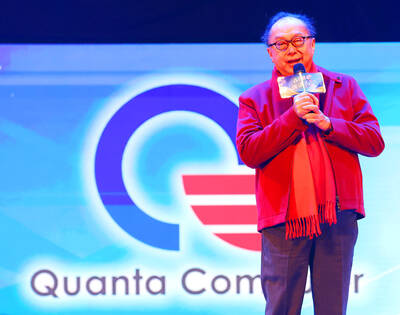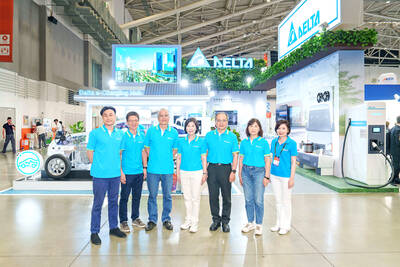Mobile phone users around the world are expected to grow at less than 6 percent per annum in the next five years, the Taipei-based Market Intelligence Center (MIC, 資訊市場中心) said yesterday.
Handset users are expected to grow to more than 4 billion in 2012, compared to more than 3 billion this year, MIC said in its latest forecast. The mobile phone penetration rate may rise to 57.2 percent in 2012 from more than 40 percent this year, MIC said.
"Growth is slowing as the main driving force will come from replacement demand rather than emerging markets," MIC industry analyst Su Yung-sheng (蘇永生) said.
The annual growth rate was 7.8 percent between 2001 and last year and 10.4 percent between 2001 and 2005, MIC statistics showed.
The handset market is nearing saturation in Europe and other developed countries, Su said, adding that the future growth pickup will be from China and India.
Su projected that mobile phone replacement ratios will grow 68 percent this year.
The world's top five mobile phone brands -- Nokia, Samsung, Motorola, Sony Ericsson and LG Electronics -- will have a 75.3 percent share of the world's handset market, MIC said, without providing a basis for comparison.
MIC said there would be two major trends in mobile phone development: one will focus on low-cost, ultra-thin and multi-function phones, while the other will focus on new technologies and trendy designs.
MIC industry analyst Chen Quan-ming (陳冠名) said user-friendly features such as Micro-Electronic Mechanical Systems (MEMS), 3D Accelerometer and ID verification will become the major features in mobile phones.
The use of MEMS on mobile phones has become very common, including the 3D Accelerometer, which is used in Nintendo's Wii Remote, its wireless controller and Apple Inc's iPhone, Chen said.
Meanwhile, the penetration rate of local 3G mobile phone users has only reached 9 percent, mostly men aged between 45 and 55, the results of a new survey showed yesterday.
The survey, conducted by Brain Magazine (動腦雜誌) and Taylor Nelson Sofres PLC (模範市場研究), found that local 3G mobile users are mostly attracted to the phone's enhanced communication capabilities, with 37 percent of respondents using their phones to send video messages or e-mails.
More than 30 percent of the survey's respondents believe that 3G mobile phones will bring greater convenience to life.
Statistics compiled by the National Communications Commission show that Taiwan has 2.36 million mobile phone users as of the second quarter of this year. Of that number, 27 percent are 3G and PHS users.

Quanta Computer Inc (廣達) chairman Barry Lam (林百里) is expected to share his views about the artificial intelligence (AI) industry’s prospects during his speech at the company’s 37th anniversary ceremony, as AI servers have become a new growth engine for the equipment manufacturing service provider. Lam’s speech is much anticipated, as Quanta has risen as one of the world’s major AI server suppliers. The company reported a 30 percent year-on-year growth in consolidated revenue to NT$1.41 trillion (US$43.35 billion) last year, thanks to fast-growing demand for servers, especially those with AI capabilities. The company told investors in November last year that

Intel Corp has named Tasha Chuang (莊蓓瑜) to lead Intel Taiwan in a bid to reinforce relations between the company and its Taiwanese partners. The appointment of Chuang as general manager for Intel Taiwan takes effect on Thursday, the firm said in a statement yesterday. Chuang is to lead her team in Taiwan to pursue product development and sales growth in an effort to reinforce the company’s ties with its partners and clients, Intel said. Chuang was previously in charge of managing Intel’s ties with leading Taiwanese PC brand Asustek Computer Inc (華碩), which included helping Asustek strengthen its global businesses, the company

Taiwanese suppliers to Taiwan Semiconductor Manufacturing Co. (TSMC, 台積電) are expected to follow the contract chipmaker’s step to invest in the US, but their relocation may be seven to eight years away, Minister of Economic Affairs J.W. Kuo (郭智輝) said yesterday. When asked by opposition Chinese Nationalist Party (KMT) Legislator Niu Hsu-ting (牛煦庭) in the legislature about growing concerns that TSMC’s huge investments in the US will prompt its suppliers to follow suit, Kuo said based on the chipmaker’s current limited production volume, it is unlikely to lead its supply chain to go there for now. “Unless TSMC completes its planned six

Power supply and electronic components maker Delta Electronics Inc (台達電) yesterday said it plans to ship its new 1 megawatt charging systems for electric trucks and buses in the first half of next year at the earliest. The new charging piles, which deliver up to 1 megawatt of charging power, are designed for heavy-duty electric vehicles, and support a maximum current of 1,500 amperes and output of 1,250 volts, Delta said in a news release. “If everything goes smoothly, we could begin shipping those new charging systems as early as in the first half of next year,” a company official said. The new